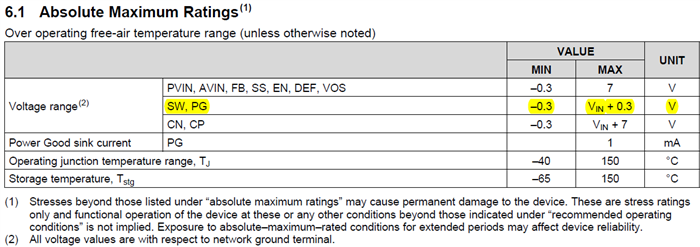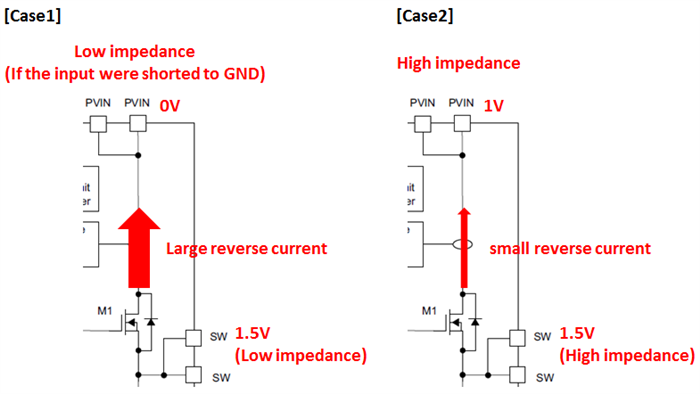Hi Team,
Our customer are evaluating TLV62090 at the following conditions.
------------------
[Conditions1]
VIN=1V
VOUT=1.5V (The voltage is applied from the outside(other power supply).)
EN=LOW (shut down)
[Q1]
I understand that they don’t use TLV62090 at this condition because SW pin is out of absolute Maximum Ratings.
Is my understanding correct?
------------------
[Conditon2]
VIN=5V
VOUT=From 1.5V to 1.8V
EN=From Low to High
[Q2]
I understand that TLV62098 have function of pre-bias start up.
So, this operation does not have any problem.
Is my understanding correct?
------------------
If you contact to below my e-mail address or let me know your e-mail address,
I can send the customer information(measurement waveform & circuit).
I’m looking forward to hearing from you.
[my e-mail address]
Regards,
Kanemaru



